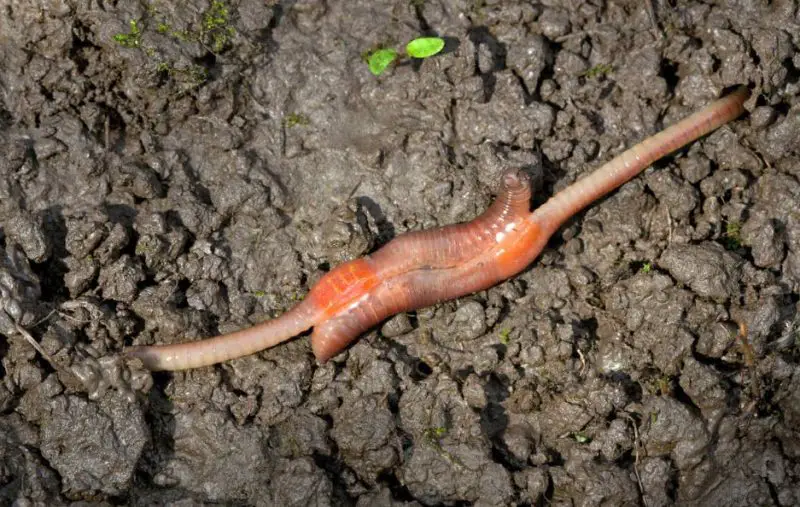Worms are fascinating creatures that play an essential role in ecosystems worldwide. While they might seem simple at first glance, their reproductive methods are both unique and complex. Understanding how worms reproduce can provide insight into their survival, population growth, and ecological impact.
This article will explore in detail the reproductive process of worms, covering different types, mating behaviors, and intriguing facts that may surprise you.
The Basics of Worm Reproduction

Worms reproduce in various ways depending on their species. Some are hermaphrodites, possessing both male and female reproductive organs, while others reproduce asexually. Below, we will explore the fundamental aspects of worm reproduction, starting with their biological classification.
Types of Worms and Their Reproduction Methods
Worms belong to different classifications, and each group has distinct reproductive strategies. The three primary categories of worms are:
Annelids (Segmented Worms)
Annelids, such as earthworms and leeches, are known for their segmented bodies. Most annelids are hermaphrodites, meaning they possess both male and female reproductive organs, allowing them to mate with any other mature individual of their species. This characteristic gives them a reproductive advantage, as they do not need to search for a specific gendered mate. Instead, they exchange sperm during copulation and later use the stored sperm to fertilize eggs. This process ensures a higher likelihood of successful reproduction.
Nematodes (Roundworms)
Nematodes are non-segmented worms that reproduce sexually. Unlike annelids, they typically have separate male and female individuals. Males produce sperm cells, while females produce eggs that are fertilized through internal or external means, depending on the species. Some nematodes, however, can reproduce through parthenogenesis, a form of asexual reproduction where females produce offspring without male fertilization. This allows populations to grow rapidly, especially in environments where mates are scarce.
Platyhelminthes (Flatworms)
Flatworms include species such as planarians, flukes, and tapeworms. Many flatworms reproduce asexually through fragmentation, where a single individual can divide into multiple offspring. Others reproduce sexually and are hermaphroditic, capable of both producing and receiving sperm during mating. Some species of flatworms engage in a unique reproductive behavior known as “penis fencing,” where two individuals try to inseminate each other, with the “winner” assuming the role of the father.
How Do Earthworms Reproduce?
Earthworms are among the most well-known worms due to their role in soil health. Their reproductive process is particularly interesting because of their hermaphroditic nature. Unlike some other hermaphroditic creatures, earthworms still require a partner to mate. This ensures genetic diversity within their population, which contributes to their resilience and adaptability in various environments.
The Mating Process of Earthworms
Earthworms require a partner to reproduce despite having both male and female reproductive organs. Their mating process involves several steps:
Finding a Mate
Earthworms rely on moisture to move and locate potential mates. When conditions are right, they seek out another worm to exchange sperm. Moist environments, such as after a rainfall, increase the chances of earthworms encountering each other, making reproduction more efficient.
The Clitellum’s Role
The clitellum, a thickened, glandular section of an earthworm’s body, plays a crucial role in reproduction. During mating, earthworms align their bodies ventrally, exchanging sperm through their reproductive openings. The clitellum secretes mucus that helps facilitate sperm transfer and later forms the protective casing for developing embryos.
Formation of the Cocoon
After sperm exchange, the clitellum secretes a mucus ring that gradually hardens into a protective cocoon. As the worm moves backward, it deposits both eggs and sperm into this cocoon. The cocoon then seals itself and is left in the soil to develop. Within a few weeks, tiny juvenile worms emerge, ready to begin their life cycle.
How Long Does It Take for Baby Worms to Hatch?
Earthworm cocoons take about 2-4 weeks to hatch, depending on environmental conditions such as temperature and humidity. The young worms emerge fully formed but miniature in size and immediately begin burrowing into the soil. These baby worms are independent from birth and start contributing to soil aeration and nutrient cycling right away.
Asexual Reproduction in Worms
Some worm species can reproduce without a mate. This process, known as asexual reproduction, allows them to regenerate lost body parts or produce offspring through fragmentation or parthenogenesis. These methods ensure the survival of worm populations even in harsh conditions where finding a mate may be difficult.
Worms That Reproduce Through Fragmentation
Planarians, a type of flatworm, are well known for their ability to regenerate. If a planarian is cut into several pieces, each segment can regenerate into a fully functional worm. This remarkable ability allows them to survive injuries and rapidly increase their population without the need for sexual reproduction.
Surprising Facts About Worm Reproduction
Worm reproduction comes with many fascinating facts that might surprise you:
Earthworms Can Store Sperm for Later Use
After mating, earthworms can store sperm for several months before fertilizing their eggs. This adaptation allows them to reproduce even when mates are not readily available. If environmental conditions suddenly become unfavorable, they can delay reproduction until a more suitable time.
Some Worms Can Clone Themselves
Certain species of flatworms can produce genetically identical offspring through self-replication, a phenomenon that is rare among more complex organisms. This ability helps them rapidly colonize new environments without the need for a mate.
Worms Lay Hundreds of Cocoons Each Year
An individual earthworm can produce dozens to hundreds of cocoons annually, ensuring rapid population growth under favorable conditions. This high reproductive rate is essential for maintaining healthy soil ecosystems, as earthworms play a crucial role in breaking down organic matter and enriching the soil.
Conclusion
Worm reproduction is an intriguing and essential aspect of their life cycle. From hermaphroditic mating behaviors to asexual regeneration, worms employ diverse reproductive strategies that enable them to thrive in various environments. Understanding their reproductive mechanisms not only sheds light on their survival but also highlights their ecological importance, particularly in soil aeration and nutrient cycling.
By exploring the surprising ways in which worms reproduce, we gain a greater appreciation for these often-overlooked creatures that play a crucial role in our world.






